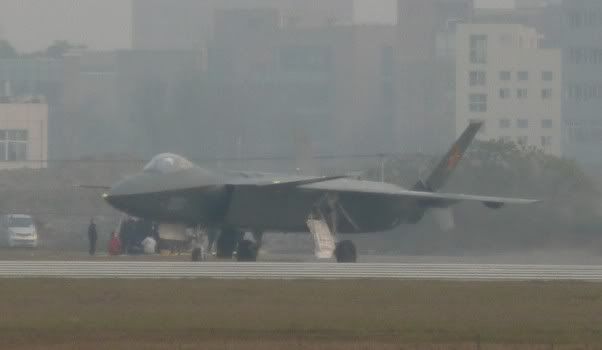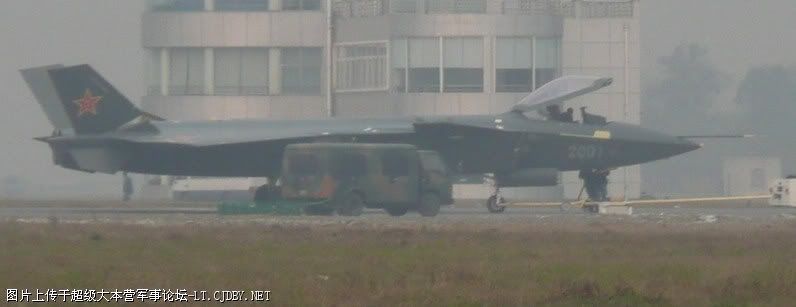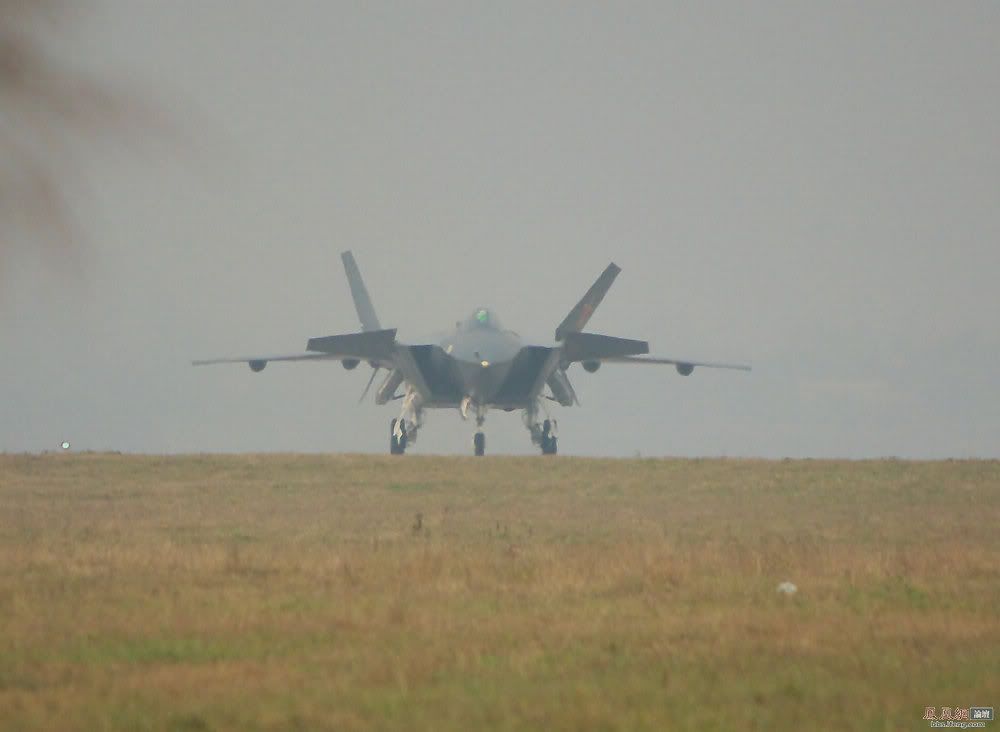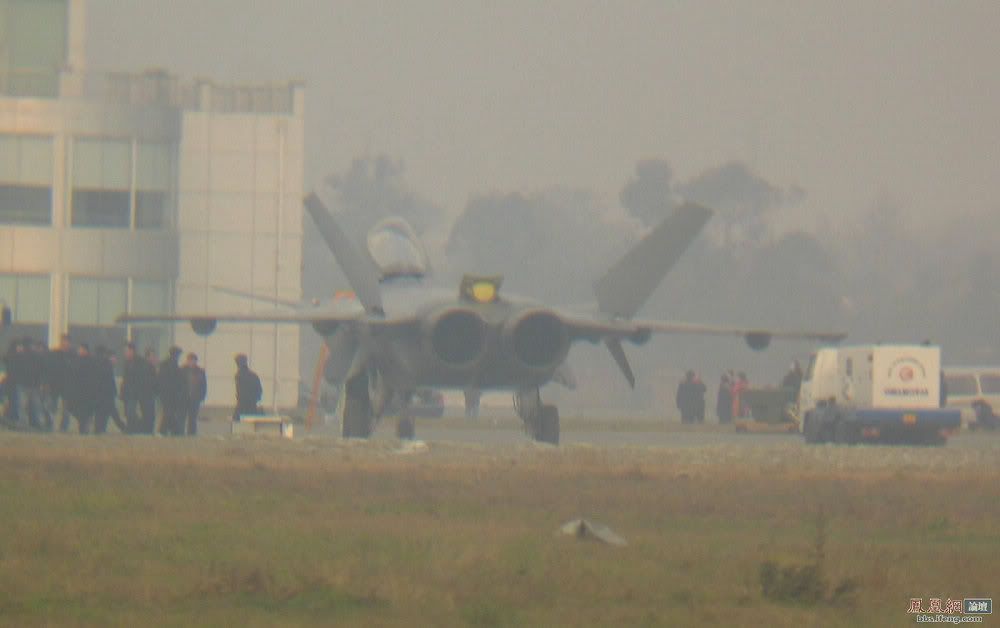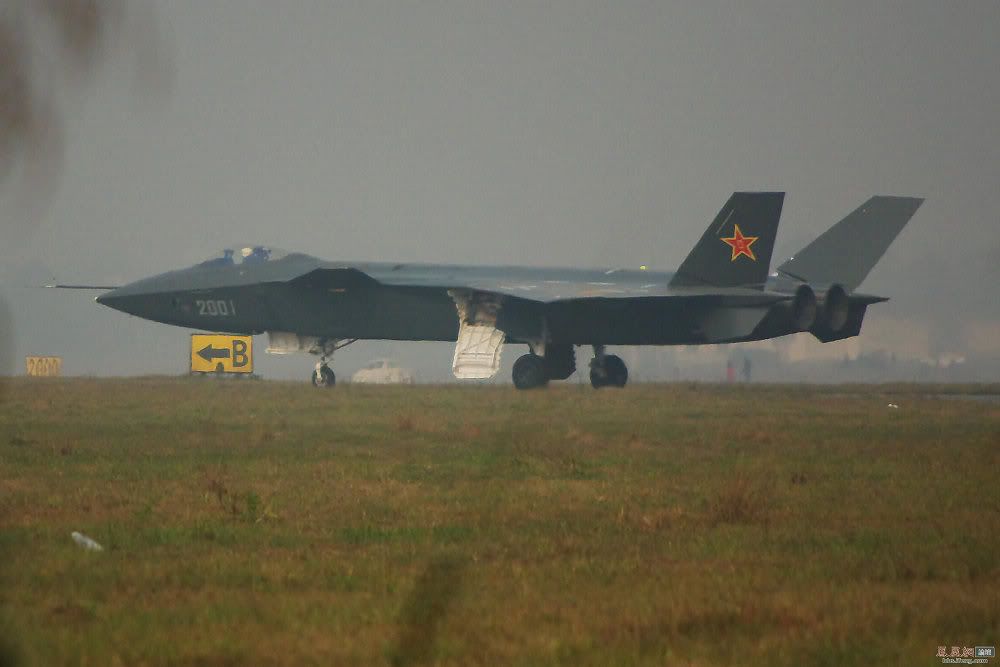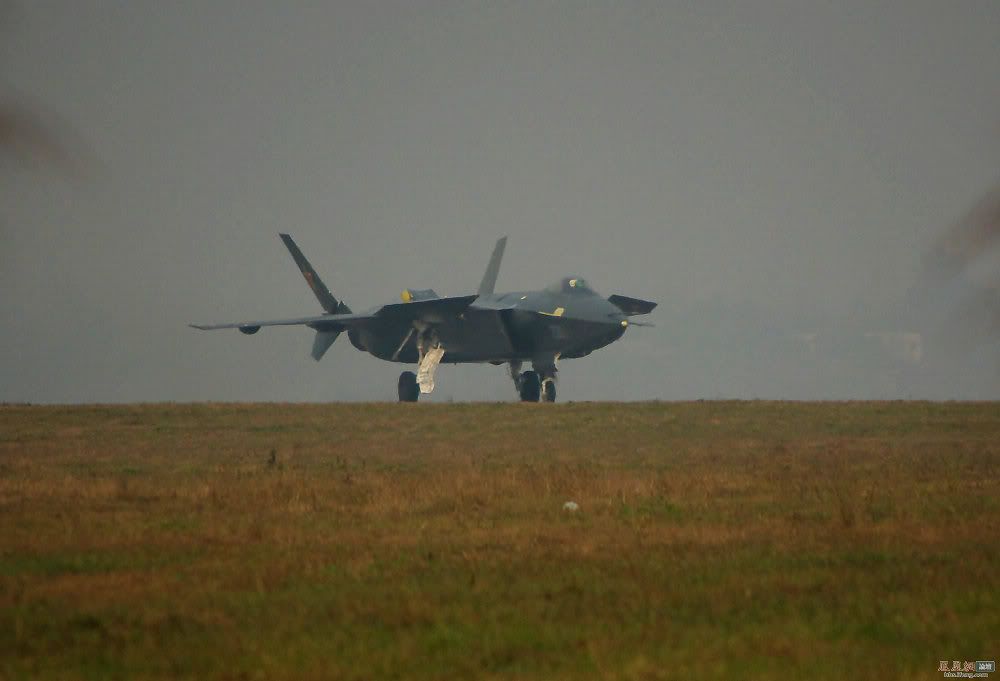Vympel wrote:Yes, and? All I'm saying is that Chinese engine technology is still quite young, which casts serious doubts on this weirdly triumphal talk about how awesome the Chinese are all of a sudden.
So what if it's young. The point is they are no longer reliant on Putin's decrees to obtain engines for heavy aircraft, and pretty soon won't be for light aircraft.
If the J-20 isn't going to have a fifth generation engine anytime soon, then its hardly going to be a credible F-22A competitor, right?
Again, you miss my point. You don't need engines that put out 35,000+ lbf wet if you're not engaging in high alpha manouvers.
The F-22 has a T/W of about 1.08 (100% fuel) to 1.26 (50% fuel).
The F-108A Rapier would have had a T/W of 0.57 (100% fuel) to 0.74 (50% fuel).
With the present output of the WS-10A; China will be fine -- the plane will be capable of supercruising, but it will be limited like the F-22 due to both having large frameless canopies.
Cruising at M1.5+ @ 65,000 feet easily lets you munch on delicious delicious F-15s, F-16s, F-18s and whatever else that annoys you; since your AAMs will have a huge boost in range from your speed and altitude; and you will be capable of controlling the engagement with your speed and altitude.
No need to get into pointless energy bleeding high alpha dogfighting that needs large installed thrust to recover lost energy. In other words, no damn Cobras.
There's no guarantee at all the world will be significantly richer in 2020.
Singapore with a GDP of $255 billion was easily able to blow a billion on just twelve F-15SGs. Goldman Sachs in it's famous BRIC report estimated that by 2020 Pakistan would have a GDP of 268 billion, Vietnam 273, the Philippines 289, Iran some 716, and Indonesia some 752.
Now granted the Global financial crisis will have cooled off these predictions quite a bit -- but there will be a market for it.
Again, my intention is not to rubbish China, but to moderate all this weird Rising Dragon talk.
The fact of the matter is that China is becoming increasingly independent of foreign suppliers of technology.
I don't think there's any evidence that they haven't got strategic bombers by conscious choice as opposed to simply not having the technology to build some on their own. Simply look at the H-6.
Oh please.
The Chinese have looked at a heavier capability strategic bombing force in the past -- they proposed the H-8-I, with four WS-6J turbofans or six JT-3D turbofans, or the H-8-II, with six WS-6J turbofans in the 1970s; but they did not get past the paper stage.
It's more than within China's capability today to produce a modern long range bomber.
So where's the programme?
The best we've seen from them on this front are modernized H-6 one-off prototypes with newer engines in factories.
This is a conscious strategic choice to spend their monies elsewhere.
So anyone's supposed to be scared of the J-20 then? Come on man, if this thing's going to be a credible fifth-generation fighter, it needs a proper engine.
Again, see my earlier reply in this post. You only need umpty billion ton thrust engines if you are going to turn and burn like Maverick and Goose in Top Gun bleeding off energy that must be regained through prodigious quantities of thrust.
Again, it won't even fly for the first time until 2014. There's not going to be any tanker variant of the C919 in a few years. 2014 itself is a few years.
That assumes the C919 is actually going to find success as a commercial airliner too, btw.
Considering the whole C919 programme was launched in 2008, six years to first flight is pretty good, considering the problems that Boeing is having with the 787 programme, which launched in 2003 and first flew in 2009; the same timeframe.
Oh, and the C919 is apparently very conservative -- weighing in at 77.3 tonnes -- the same as the 1980s A320 with only six more seats over it. So it certainly is not pushing the bleeding edge of aeronautics the way the 787 was with composites and distributed manufacturing.
And it wouldn't be the first airliner which was a commercial failure but found new life in military contracts -- hello Lockheed Electra, anyone?
Because they might need them?
The PLAAF already have some 17-20 x IL-76s, giving them a minimal long range heavy transport capability, and ten H-6 based tankers.
The question is why should the Chinese enter a new contract with the Russians for heavy transports and tankers of the same model family that the Russians have yet to deliver, despite the contract being signed in 2005 and there being 12 unfinished airframes already at the factory in question?
I'm not saying I know for a fact whether they will or won't get them, but appealing to future aeroplanes that aren't even in service as a reason why not is specious.
Right, because long term planning doesn't exist in Vympel world.
Probably for the same reason that they needed the S-300 when they had the HQ-9?
Actually, none of the reasons that caused them to buy the S-300 as a stopgap system while HQ-9 shook out it's development bugs apply to the S-400.
For one, the S-400 missiles in the complex that work -- the 48N6E3, 9M96E/9M96E2 -- actually offer no real substantiative advantage over the S-300's missiles, other than adding the capability of quad packing in ABM interceptors like PAC-3.
While that is a nice capability, is it justification enough for adding an entirely new weapons system when you just bought S-300PMU2 and the HQ-9 is more than capable of handling ABM?
This isn't a contest with Russia Shep. Russia has absolutely nothing to do with this topic. I'm merely pointing out this Rising Dragon stuff is overstated.
I'm pointing out that China is already a greater, more credible threat than the moribund Russian military.
Great, at this rate they'll have bout 6 by 2020. Rising Dragon!

Considering that they built the first of class 052C in about 23 months, the Type 052Cs they laid down this year will commission Fall 2012.
At a rate of two ships every two years; by 2020, they will have twelve 052Cs in commission. This is more than enough to provide the PLA(N)'s carrier with an escort at all times.
I suspect the ultimate force level of 052Cs will depend on what level of protection the PLA(N) considers necessary for a carrier and the number of carriers they plan to have.
The US Navy in the 1980s determined the ultimate force numbers for the Ticonderoga class by determining that each CVBG would have two ships and each SAG would have one ship. At the then-present force level of twelve CVBGs and three SAGs, this led to 27 Ticonderogas required.
Again, this has nothing to do with Russia. Russia has its own problems.
Again, China is already a far more credible threat than moribund Russia, which is now basically Upper Volta maintaining it's seat at the
Table Where Big Boys Sit through devious energy deals with Europe and the huge pile of nuclear weapons it has left over from the days of the USSR.
Huge lineups doesn't mean much Shep.
Considering a PLA Marine Brigade is organized around:
1 to 2 Amphibious Armored Battalions (30-40 AFV per Bn)
4 to 5 Amphibious Infantry Battalions (30-40 AFV per Bn)
Misc other units
It's easy to guesstimate how many ZBD-05s and ZTL-05s exist in PLA Marine Hands.
30 to 80 ZTL-05 Amphibious Tanks
120 to 200 ZBD-05 Amphibious IFVs
Harder to estimate the amount that the PLA Army has.
But we do know that the 1st Amphibious Mechanized Infantry Division have had the ZTL-05 and ZBD-05 since 2009 when they paraded in it, while the 124th Amphibious Mechanized Infantry Division still has the older equipment.
These Amphibious Mech Inf Divisions have two Mech Inf Regiments and one armored regiment. Each regiment commands about four battalions.
So we can roughly guesstimate the amount of ZTL and ZBD-05s that the PLA Army has as being about 360 to 480 vehicles of both types.
These are not small numbers.
Plus of course, the PLA(N) will soon have an excellent LCAC to land the landing force with!
They started the Yuyi LCAC project in 2007 as part of the Type 071 LPD project; and it's already tooling around.
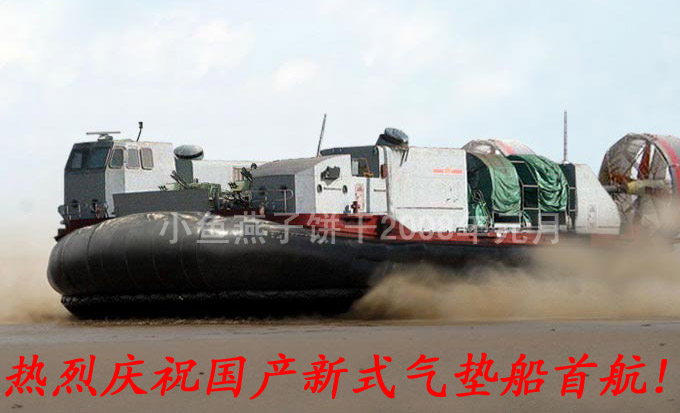 Yuyi trials in 2009
Yuyi trials in 2009
 Pre-production unit tooling around in the Gulf of Aden as part of anti piracy ops in 2010
Pre-production unit tooling around in the Gulf of Aden as part of anti piracy ops in 2010
I suppose you'll be calling this one a cheap chinese knockoff of the American LCAC, despite it being 50% longer than the American one.
Sure, some of the design is. That doesn't mean all of it is, nor does it mean its actually any good, you know?
It's clearly good enough for the PLA Marines and Army, who routinely conduct mass manouvers with the vehicles well out to sea.
By the way, it puts China into rare company. Only one other country has built heavy amphibian tracks -- the United States.
Yes; I know about how just about everything the Soviets built except tanks was to be amphibious -- but much of that is a river crossing capability of a few miles at best.
The point is that its a bit pants
Wrong.
This seems to be where Vympel gets most of his information on China's miliary from
The truth is, the armor system of the latest and greatest Chinese tank’s turret looks nothing short of ugly. Due to poor design choices, the thickness of the armor at the 30-35 degrees angle is a mere 350mm, whereas the figure for the latest Soviet/Russian tanks is about 600mm from all angles.
Let's look at some photos.
ZTZ-98 top photo
This is the ZTZ-98. Eighteen of these were first seen in the 1999 parade; and it was the initial production version of the advanced tank. After changes to the engine and a redesigned turret armor array, the modified ZTZ-98Gs were then adopted as the ZTZ-99.
Since we know the width of the ZTZ-99 is 3400mm, we can then estimate the LOS thickness of the frontal turret armor. You can see the outlines of the special armor insertion points.
My estimation is that this basic model has about 520mm of LOS on the frontal turret armor arrays; with the hole for the armor insert being about 170 x 470mm (hard to tell with it's trapezoidal shape).
The ZTZ-99 had a new modular system which was more angular and resembled the Leopard 2A5's turret armor. Here's a photo of one such turret armor module:
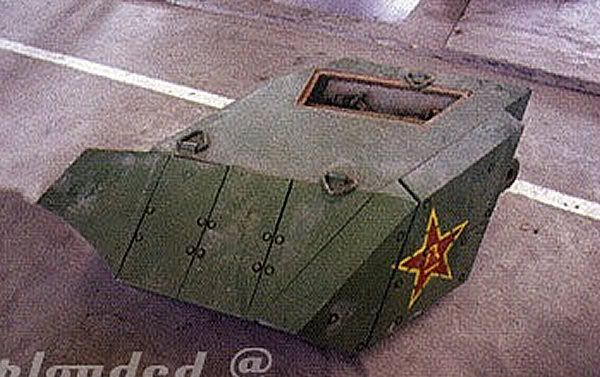
Scaling off the earlier figures we got for the special armor insertion ports; I have a LOS of about 755~ mm on the top; and 1400~ mm at the "arrowpoint".
Now; undoubtly my scaling is off and there are gross errors; but you can see that the ZTZ-99 has fairly thick frontal turret armor; certainly far more than the 350mm that your source claims.
It's likely however that most of it is not all armor; but instead similar to the Leopard 2's early armor -- using perforated armor plates placed at various angles to add partial protection against threats and to place greater stress onto long rod sabots to snap them -- at much less weight cost than non-perforated armor.
But that's not all. The most recent model is the ZTZ-99A2.
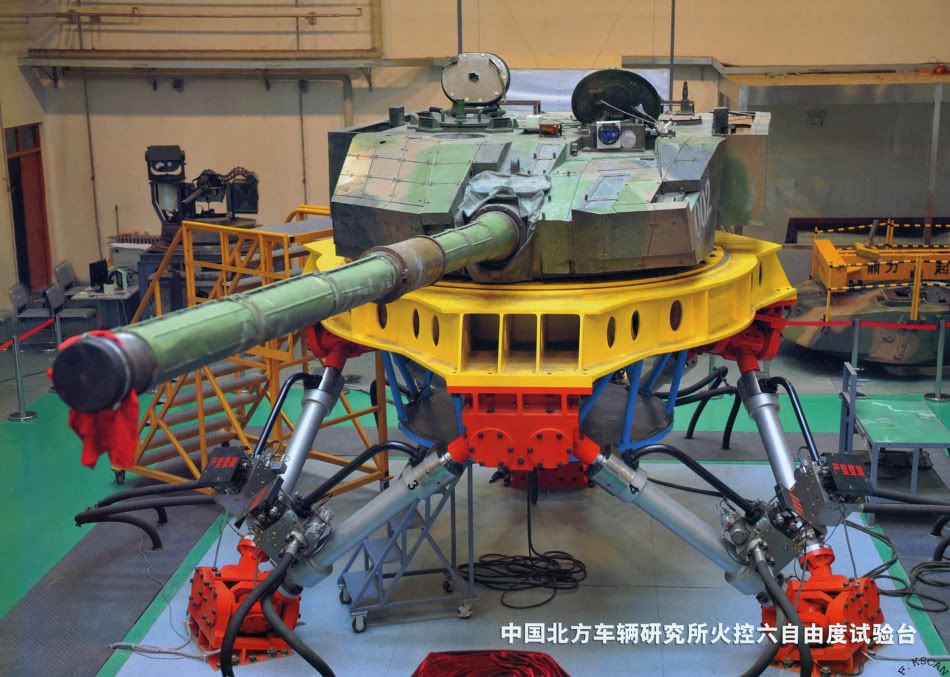
This is a ZTZ-99A2 turret at the factory. Notice anything? Like the new advanced ERA or NERA blocks on the turret adding even more protection?
Notice how much more advanced they are than the T-90's ERA arrays in that they cover far far more of the tank's surface, leaving less "holes" in the ERA protection?
If we assume that those ERA arrays are about as advanced as Kontact-5, then that means we have an additional 250mm RHA protection versus KE rounds and 600mm RHA more protection versus HEAT rounds.
But let's be super conservative. Let's assume this ChiCom ERA is only 40% as effective as Kontak-5. That still leaves us with 100mm KE/240mm HEAT on top of the base armor.
Even if they're just non explosive reactive armor made out of advanced plastics and rubber; that's still 50-75mm of extra LOS, depending on whether the bricks are 2 or 3 inches thick.
So yeah. The ZTZ-99 is comprehensively protected to at least the level of the T-90A or mid-life Leopard 2, if not greater on the frontal turret arc.
Finally, here's a final question. Given that the cost of the ZTZ-99 is about $2.5 to $3.4 million depending on what source you go to; why would the Chinese be buying hundreds of a tank if it had armor protection only slightly improved over a T-62 with ERA addons?
Roof armor at the front is also weak
Non sequitur. The top armor on the M1 Abrams near the driver's position is pretty weak.
But guess what?
It's at a very sharp angle, almost 70 degrees -- so most everything that hits it is likely to riochet off, or penetrate at such a sharp angle that it has a lot of LOS to go through. Same principle also applies to the roof armor of any turret near the front.
and the tank has inherited the weakness of the porthole and hatch areas from the old Soviet designs.
I'm not even sure what he's trying to get here.
The dimensions of the Type 99 turret make any substantial improvements in its built-in protection system all but impossible - witness the latest modification, Type 99A1.
Actually no.

Since the armor is external to the turret, all you need to do to add more protection frontally is to remove the armor module with a crane -- notice the handy dandy three eyes on the top for lifting -- and place a new module in. The module can be longer to offer more LOS protection if you want.
Side turret armor can also be increased easily -- they've already done this:
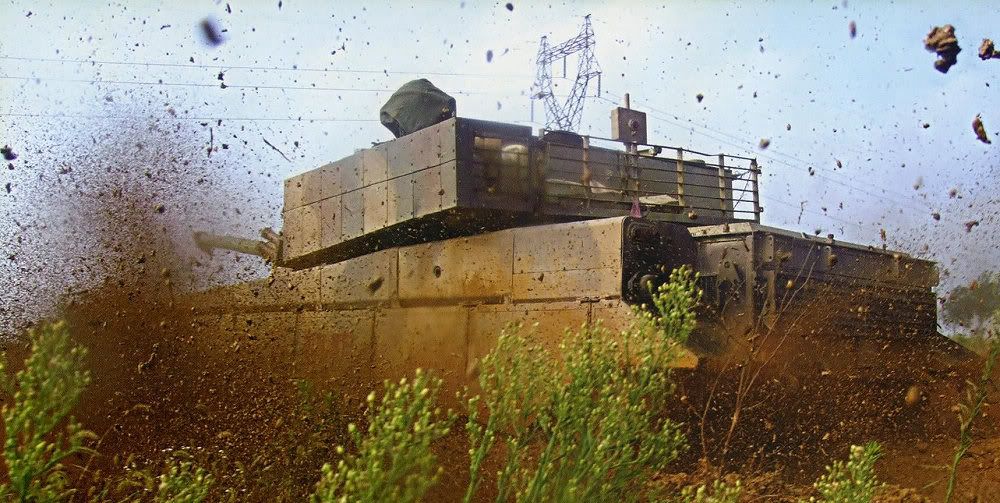
Notice the side ERA blocks? There are other angles which suggest that the ERA is placed over the crew's side stowage bins; so that the sleeping bags and other crap the crew has acts as applique armor.
Meanwhile, the decision to use the powerful but bulky German MTU diesel engine forced the Chinese designers to add an extra meter to the tank’s length, bringing its weight to 54 metric tons despite the sacrifices made in armor strength.
That brings up another point. The 1 meter of extra length the hull has over the T-72, along with the 1.500 PS engine mean that there's more than plenty of growth options for add on armor, more powerful whatever, replace the turret with a new one with more protection if the need should arise; and not have to majorly upgrade the suspension and powertrain.
Besides, the use of imported engines - or their assembly from imported components
Actually, the ZTZ-99's engine is a Chinese derivative of the German MTU MB 870 V and built in China.
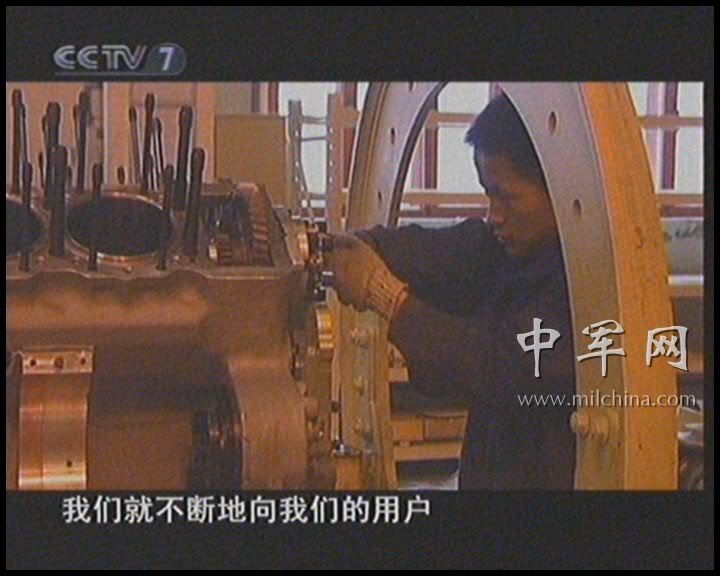
Wow, that looks like a Germanoid and and I didn't know CCTV-7 was an official Germanoid channel.
Compared to the vast experience of Soviet/Russian tank designers, the Chinese are only making their first steps - and it really shows.
China has long since built it's own MBTs since the Sino Soviet Split; and they've had long experience in building tanks for export, specifically for Pakistan. In fact, a lot of failed contenders for PLA tank programmes end up in Pakistan and given Pakistani names.
Let's also not mention the fact that the ZTZ-99 programme began in 1984 and ran in a developmental phase until first public showing of the ZTZ-98 in 1999.
The initial idea was to produce a tank capable of meeting a Soviet T-80 on equal grounds with a possible overmatch. This...changed after 1991 to face the M1A1 Abrams threat after we had efficiently shredded Iraq.
As a random aside; the Chief Designer for the ZTZ-99 is about 93 and a National Hero of the War of Resistance Against the Japanese Invasion (1937-45).
There are other howlers in the article like the fighting compartment of the new 155mm SPH being a clone of the 2S19, the Smerch Clone, etc etc.
What he leaves out is that China developed FOUR major MRLS systems at the same time -- the Smerch look-alike just happened to win the PHL-05 contract.
There was the WS family, the A-100 family, the AR-1/2 (Smerch look alike) family, and the WM-80 family, which ended up being sold to Armenia.
In any event, its [ZTZ-99 numbers] not particularly impressive.
At a production level of 100 tanks a year or so, by 2020, China would have a modern tank fleet of 1,000 - 1,300 front line tanks. This compares nicely to the 1,200~ M1A2s in the US Army's inventory.
Add in the ZTZ-96s that are also being produced to replace the older T-54 clones en masse and China's tank fleet will be very modern by that date.
And again, Shep, this has nothing to do with Russia.
Again, I'm pointing out that China is already a greater, more credible threat than the moribund Russian military which is Upper Volta with nukes.



 "
"